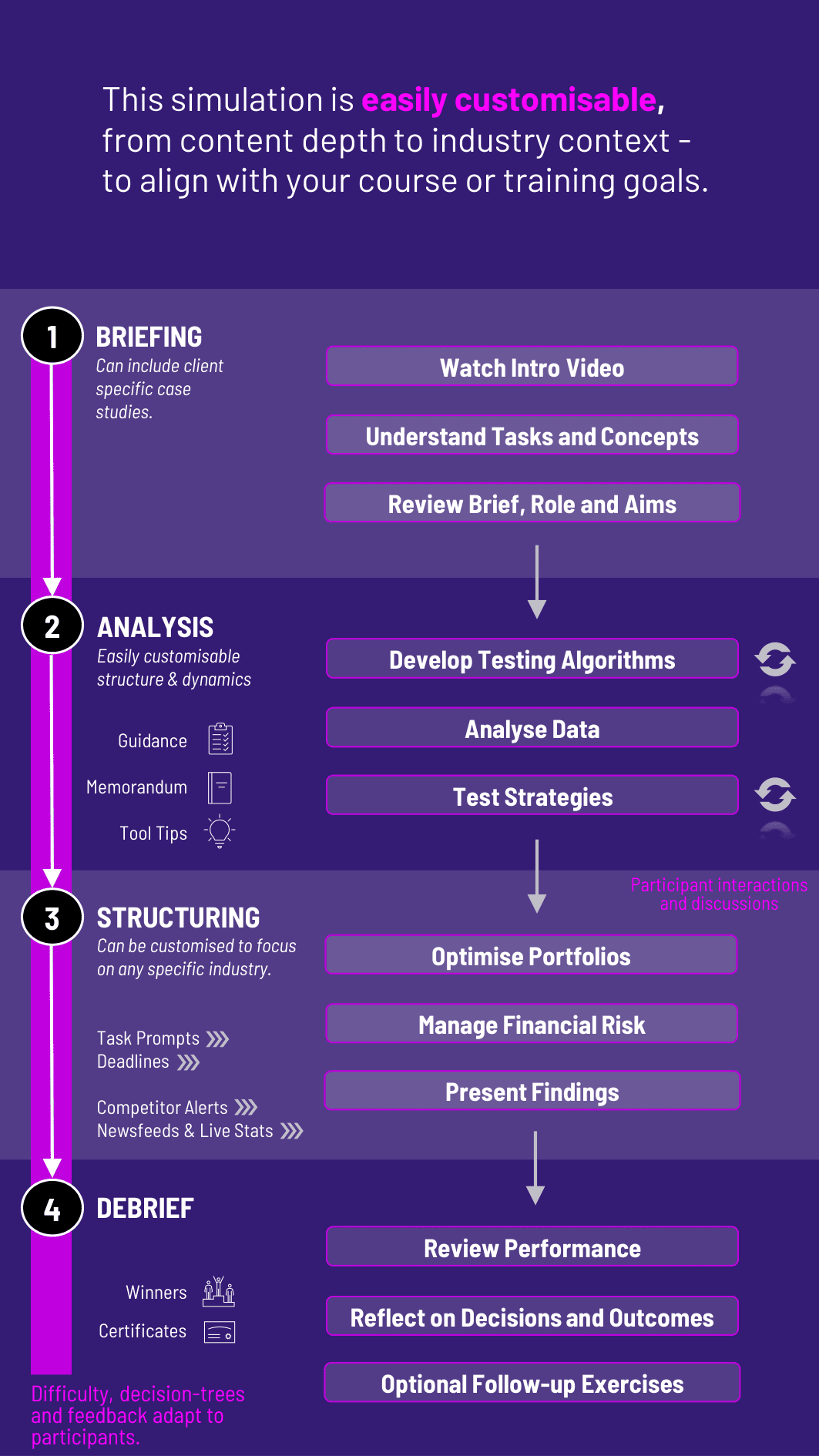
Participants take on the role of quantitative analysts, building models, testing strategies, and managing financial risk to optimize performance under real-world pressures with our quantitative finance training.
The Quantitative Finance Training places participants in the role of quantitative analysts (quants), responsible for building and applying mathematical models to solve complex financial problems.
Participants develop, test, and implement strategies based on real-world market data, all within a dynamic and competitive trading environment. The quantitative finance training emphasizes precision, speed, and adaptability as participants balance innovation with risk control.
This hands-on experience brings to life the tools and techniques used in hedge funds, investment banks, and proprietary trading firms. Participants explore applications in algorithmic trading, derivatives pricing, portfolio optimization, and financial engineering.


By replicating real-world trading and investment scenarios, this quantitative finance training challenges participants to use logic, math, and programming to solve nuanced problems. It’s ideal for learners seeking roles that blend finance, analytics, and technology - and for instructors looking to embed experiential learning into advanced quantitative finance or financial engineering courses.
Who is this training best suited for? It's designed for participants and professionals pursuing careers in quant finance, trading, financial engineering, or fintech.
Do I need programming skills? Basic familiarity with Python or R is helpful, but support materials are provided for all experience levels.
What kind of data is used in the training? A combination of historical and simulated real-world data feeds to support analysis and modeling.
How long does the quantitative finance training last? Typically 6–8 hours, but modular design allows flexible implementation over multiple sessions.
Does it include coding exercises? Yes, the quantitative finance training incorporates code-based analysis and modeling using standard quant tools.
Is the training collaborative or individual? It can be delivered in team or solo formats, depending on course structure or organizational goals.
Can it be customized for advanced learners? Yes, instructors can tailor the difficulty and focus - e.g., high-frequency trading, risk analytics, or machine learning.
What are the key deliverables? Participants produce models, performance reports, trading strategy decks, and risk analyses.
Is instructor support available? Yes, including instructor guides, solution frameworks, and setup assistance.
How does this support career readiness? It develops technical and analytical capabilities critical to roles in hedge funds, banks, and tech-driven finance teams.
Join this 20-minute webinar, followed by a Q&A session, to immerse yourself in the quantitative finance training.
or
Book a 15-minute Zoom demo with one of our experts to explore how the quantitative finance training can benefit you.